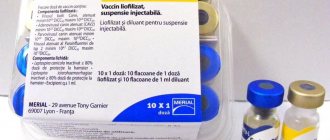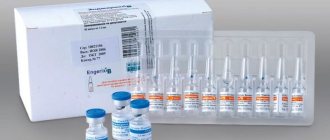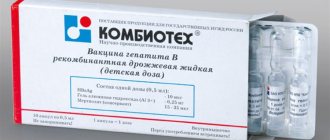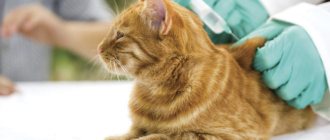At the medical office, you can get vaccinated against leptospirosis, or, as this disease is also called, Weyl-Vasiliev water fever. This is an acute infectious disease that humans contract from animals. The pathology is caused by parasitic microorganisms called Leptospira. These are microorganisms that live in water, there are 30 forms of Leptospira, which are common in a certain area and climate, which can be infected.
The problem is that this microorganism produces a toxin that is resistant to low temperatures and thrives both in water and on land. You can become infected not only through water, but also when cutting meat. So you can get infected by eating unprocessed foods. The peak of the disease occurs in August.
Leptospira enter the body through microdefects in the skin. From there they enter the lymphatic pathways and are carried to organs such as the spleen and liver, kidneys and lungs, and the nervous system. Leptospires accumulate and multiply in these organs, and this is an incubation period that lasts from one to two weeks.
Symptoms of leptospirosis
Leptospirosis is characterized by an acute onset: fever with chills, insomnia, headaches and thirst. The patient then exhibits the following symptoms:
- I am bothered by muscle pain, especially in the calves, thighs and lower back, and it is difficult to move normally.
- the face and neck turn red, swelling appears, “hood symptom”,
- The whites of the eyes turn red, and there is a feeling of sand in the eyes.
The duration of fever is 5 days or more. It is characteristic that 1-2 repeated peaks of fever may occur. If the disease reaches a severe stage, then jaundice occurs with yellowing of the sclera and skin, a rash on the skin, it can develop into hemorrhagic elements. Damage to the heart with low blood pressure and bradycardia, nasopharyngitis, pneumonia are also possible; the nervous system and kidneys are affected.
Prevention of leptospirosis
Leptospirosis infection can be prevented by limiting contact with carriers of the disease, which are infected rodent pests, farm and domestic animals. Preventive measures to combat this disease can be divided into two groups. The first category includes rules for which the person himself is responsible. The second group includes activities, the organization and control of which is the responsibility of sanitary and epidemiological control authorities and health care institutions. The rules for personal prevention of leptospirosis are:
- timely vaccination of animals;
- detection and treatment of disease in domestic animals;
- extermination of rodents and prevention of their appearance;
- implementation of preventive rules during agricultural work;
- compliance with safety rules when relaxing in nature;
- compliance with sanitary and hygienic requirements at the workplace in case of professional belonging to a risk group;
- immunization against leptospirosis.
Vaccination of animals against leptospirosis
Immunization of animals against leptospirosis is an effective measure that will protect humans and animals from this disease. Vaccination methods depend on the conditions in which the animal was acquired. If the owner knows for sure that the animal is not infected with leptospira (when purchased from a nursery or from a breeder), a standard vaccination procedure is carried out. If the animal was purchased by hand or picked up on the street, passive immunization is carried out, in which a special hyperimmune serum is placed before the vaccine.
Detection and treatment of leptospirosis in pets
Pet owners are at risk for leptospirosis, as the source of infection is often a sick animal. The main routes of infection are skin contact with water that is contaminated with secretions, saliva or urine of a sick animal. Timely identification of the symptoms of the disease in an animal and adequate treatment will allow a person to avoid infection with Leptospira.
.Diagnosis and treatment of leptospirosis
If symptoms of leptospirosis are detected, laboratory tests are prescribed:
- in blood tests, leukocytosis due to neutrophils with accelerated ESR,
- typical changes in urine with protein and casts,
- an increase in the amount of residual nitrogen and bilirubin.
- specific methods: detect the pathogen in biological fluids,
- detect an increase in antibodies to Leptospira,
- microscopy and culture - before starting antibiotics,
- serological methods - in blood serum.
Treatment of leptospirosis is carried out by an infectious disease specialist or therapist. Treatment is based on antibiotics and specific immunoglobulin.
Methods of infection with leptospirosis
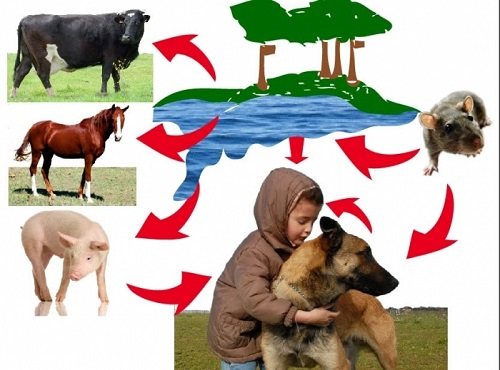
- harvest mouse;
- shrew;
- vole;
- gray rat;
- wood mouse;
- hedgehog;
- marmot;
- fox;
- less often - amphibians.
Infection with leptospirosis in an agricultural outbreak occurs due to domestic animals and small rodents living on livestock farms. The main animals of the agricultural focus of leptospirosis infection are:
- cattle (cow);
- small livestock (sheep, goat);
- horse;
- pig;
- dog;
- "domestic" black rat;
- house mouse;
- less often - poultry (ducks, geese).
All animals act as carriers and carriers of leptospirosis infection. The parasite multiplies in the animal's body, remaining for a long time in the kidneys. For many months (up to two years), leptospira are excreted in the animal’s urine into the environment, where they infect soil, water resources and surrounding objects. The most dangerous are small bodies of water (ponds, swamps, small lakes and rivers), where a large concentration of Leptospira is created. In large bodies of water, the urine of infected animals is diluted with large amounts of water, reducing the concentration of Leptospira to a minimum.
Leptospirosis infection can enter the human body in several ways. The main methods of transmission of leptospirosis infection are:
- contact;
- nutritional;
- aspiration;
- transmissible.
Contact route of infection with leptospirosis
The contact route of infection with leptospirosis is the most common. The parasite enters the human body through damaged skin and mucous membranes of the body that come into contact with contaminated surfaces and liquids. Infection occurs during agricultural work in wet meadows and pastures, on farms and meat processing plants. Infection with leptospirosis also occurs when caring for sick animals. There is a possibility of infection by contact through infected meat and blood of sick animals. People who most often become infected with leptospirosis through contact are:
- water meadow workers;
- rice farm workers;
- pet breeders;
- shepherds;
- milkmaids;
- meat processing plant workers;
- people working in slaughterhouses;
- veterinarians;
- livestock specialists;
- people working in dog kennels;
- people burying dead animals;
- taxidermists (people who make stuffed animals);
- deratizers (people who destroy rodents).
Superficial microtraumas (abrasions, scratches, small wounds) and undressed wounds become ideal entry points for leptospirosis infection. Even short-term contact of damaged skin with a source of Leptospira leads to infection of the body.
When is a person vaccinated against leptospirosis?
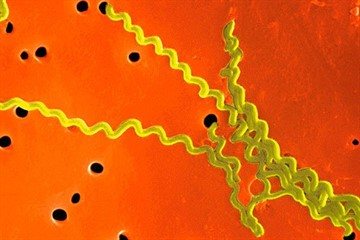
After entering the body, they attach to the inner walls of blood vessels and release toxins that damage all organs and systems. Leptospires are resistant to high or low temperatures and antiseptics, and they can live in water or soil for several weeks.
The source of infection is rodents, cattle, wild and domestic animals. Pigs and horses are most often affected, but dogs and cats are also at risk. You can become infected with leptospirosis through contact with carriers of the infection or objects they touched, or by consuming contaminated products.
The main symptoms of the disease are fever, cephalgia, muscle pain, rash, signs of liver damage (yellowing of the skin, mucous membranes and sclera). Treatment is carried out with the help of antibacterial drugs, but preventive vaccination plays an important role in preventing the consequences of leptospirosis.
Leptospirosis is not considered an epidemiologically dangerous disease, so vaccinations are given only to those people who are at risk:
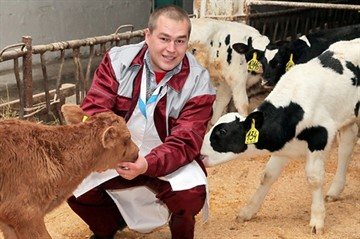
- livestock breeders and veterinarians;
- meat processing plant employees;
- personnel of laboratories working with dangerous viruses or biomaterials;
- disinfectors and deratizers (workers who take part in the capture and destruction of harmful animals).
When outbreaks of infections occur, which happens from time to time in some regions, vaccination is prescribed to everyone who lives there.
Leptospirosis is not transmitted from person to person even during the period of acute infection - only animals can act as carriers of the disease.
Human leptospirosis
Human infection occurs by swimming in bodies of water contaminated with animal secretions, by drinking, through food and household items. Natural people's receptivity is high. The transferred disease leaves a strong specific immunity to a certain serovar. Reinfection with other Leptospira serovars is possible. Leptospira enters the human body through the skin, mucous membranes of the mouth and gastrointestinal tract, eyes, nose, without causing any changes in them. Then the pathogens settle in the lymphatic. nodes and from them hematogenously (through the blood) spread to organs and tissues, causing degenerative and necrotic. changes in hepatocytes (liver cells), renal tubular epithelium, capillary endothelium and erythrocytes.
Incubation. period from several days to 1 month (on average 1–2 weeks). Basic clinical manifestations – acute onset, chills, body temperature reaches 39–40° within 1–2 days, headache, severe pain in the calf and abdominal muscles, weakness, dizziness, insomnia, lack of appetite. There is puffiness and hyperemia of the face, herpetic. rashes on the lips and wings of the nose, injection of scleral vessels and conjunctival hyperemia (hemorrhages are possible), hyperemia of the oropharyngeal mucosa. In severe cases of L., hemorrhagic lesions appear. rashes in the armpits or on the elbows, micro- or macrohematuria, nosebleeds, as well as signs of disseminated intravascular coagulation (extensive hemorrhages in the subcutaneous tissue, muscles of the lower back and abdominal wall, gastric, intestinal and uterine bleeding, hemoptysis, hemorrhagic pulmonary edema). Pain in the lumbar region is typical, and the urine may become bloody. During the height of the disease, urinary retention develops, and in severe cases of L., anuria with progressive renal failure; the size of the liver increases, dark urine and discolored feces, and itchy skin appear. In 10–15% of patients, clinical symptoms are observed. picture of meningitis.
With adequate therapy, the duration of L. is 3–4 weeks, relapses occur in 20–30% of cases. Lethal outcomes in sporadic cases. morbidity rates are 1–2%, and during epidemics – up to 15–20%.
The diagnosis is confirmed by serology. research. For early express diagnosis of L., a polymerase chain reaction is used (DNA of pathogenic leptospira is detected).
Treatment: antibiotics, detoxification therapy, drugs to improve blood clotting and increase the resistance of vascular walls. For manifestations of renal failure - diuretics, hemodialysis.
Prevention: measures aimed at combating L. among agricultural workers. and pets; prohibition of swimming in stagnant bodies of water, protection of water supplies, protection of products from rodents.
Animal leptospirosis
The disease affects various species of wild and domestic animals, of the latter pigs, cattle and dogs are most often affected; young animals suffer the most. Leptospira are excreted in urine, milk, semen, and discharge from the genital organs of sick and recovered animals; the duration of leptospir carriage ranges from several months to 2–3 years (in rodents, lifelong). Infection of animals with L. occurs through infected water during watering, bathing, and also through nutritional and sexual contact. Leptospira penetrate through damaged areas of the skin and mucous membranes. The disease manifests itself in the form of small epizootics or isolated cases. In sick animals, an increase in temperature, depression, abortions, the birth of non-viable offspring, a decrease in milk production, and atypical mastitis are observed. Mortality up to 20–70%, ch. perishes. arr. newborn young. L. often occurs in the form of asymptomatic leptospirosis carriage or immunizing subinfection (with the presence of specific antibodies in the blood in the absence of clinical signs and isolation of the pathogen). Treatment with antibiotics (streptomycin, tetracyclines), polyvalent hyperimmune serum, symptomatic. To prevent L. in domestic animals, vaccination is used.
